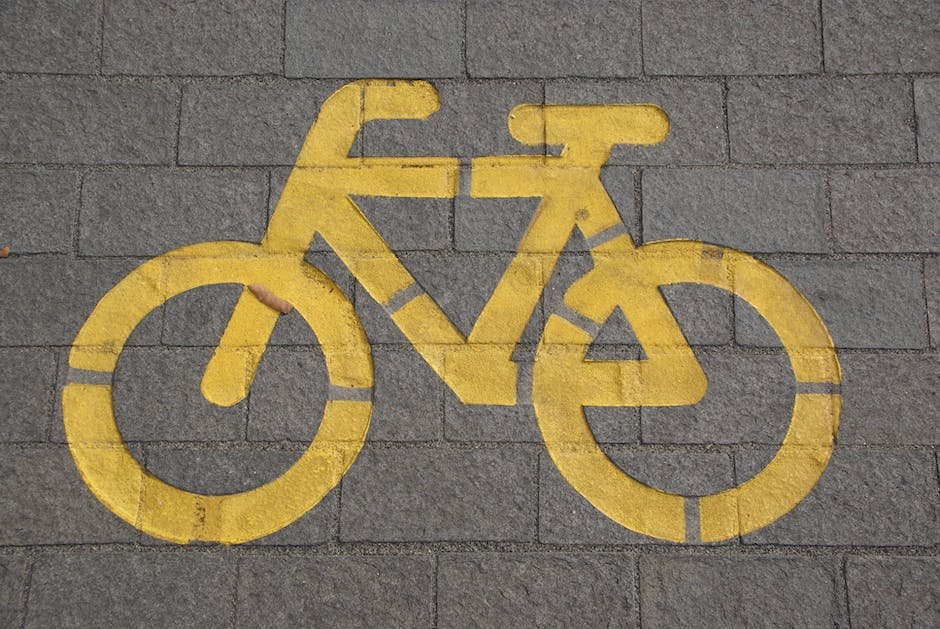Does your dog break into a chorus of howls, whimpers, or barks every time you leave the house? Or perhaps they chew on furniture, scratch at doors, or even have accidents despite being perfectly house-trained? These behaviors might be indicators that your furry friend is suffering from separation anxiety. But fret not! In this guide, we have compiled a list of frequently asked questions to help you train your dog and alleviate their separation anxiety. From understanding the root causes to implementing effective techniques, we’ve got you covered. So, let’s embark on this journey together and pave the way towards a happier and more relaxed pooch!
Table of Contents
- Understanding Separation Anxiety in Dogs
- Recognizing the Symptoms and Triggers
- Effective Training Methods for Dogs with Separation Anxiety
- Creating a Safe and Comforting Environment
- Addressing Separation Anxiety through Positive Reinforcement Training
- Q&A
- Insights and Conclusions

Understanding Separation Anxiety in Dogs
Signs and Symptoms of Separation Anxiety
Dogs are known for their loyalty and pack mentality, so it’s no wonder that some of them can experience separation anxiety when left alone. This condition can cause a great deal of distress for both the dog and its owner. Recognizing the signs and symptoms of separation anxiety is essential to addressing the issue and helping your furry friend overcome it.
Here are some common signs of separation anxiety in dogs:
- Excessive barking, howling, or whimpering
- Destructive behavior, such as chewing furniture or digging
- Urinating or defecating indoors, even if house trained
- Pacing, restlessness, or excessive salivating
- Attempts to escape, such as scratching doors or windows
- Loss of appetite or refusal to eat
- Exaggerated excitement or clinginess upon seeing the owner
These signs may vary in intensity depending on the dog and its level of anxiety. If you suspect your furry companion is suffering from separation anxiety, it’s important to consult with a professional to confirm the diagnosis and begin appropriate treatment.

Recognizing the Symptoms and Triggers
When it comes to managing our health and well-being, it’s crucial to be able to recognize the symptoms and triggers that may affect us. By understanding the signs that our bodies give us, we can take proactive steps towards better self-care and lead a more balanced life.
First and foremost, familiarize yourself with the common symptoms associated with various health conditions. Whether it’s chronic pain, fatigue, or mental health issues, recognizing these signs can allow for early intervention and appropriate treatment. Keep a journal to document any changes or patterns you notice, and don’t hesitate to consult a healthcare professional for guidance.
Additionally, identifying triggers that may worsen your symptoms is essential. These triggers can be anything from environmental factors such as pollen or certain foods, to emotional stressors like work pressure or relationship issues. By pinpointing these triggers, you can develop coping mechanisms or make necessary lifestyle adjustments to minimize their impact.
Remember, awareness is the first step in taking control of your health. By staying vigilant and informed, you empower yourself to make informed decisions that will contribute to your overall well-being.

Effective Training Methods for Dogs with Separation Anxiety
Dogs with separation anxiety can exhibit destructive behavior, excessive barking, or even attempt to escape when left alone. It’s important to approach their training with patience, consistency, and empathy. Here are some effective methods to help alleviate separation anxiety in your beloved furry friend:
- Desensitization: Gradually expose your dog to being left alone for short periods of time, starting with just a few minutes and gradually increasing. Use positive reinforcement, such as treats or toys, to create positive associations with alone time.
- Establish a routine: Dogs thrive on structure, so establish a consistent daily routine with set feeding times, exercise sessions, and alone time. This can help reduce their anxiety by giving them a sense of predictability and security.
- Provide a safe space: Create a cozy den or designated area where your dog feels secure. Use comfortable bedding and include familiar scents, such as their favorite toys or an unwashed piece of clothing with your scent, to provide a comforting environment.
- Use interactive toys: Keep your dog mentally stimulated during their alone time by providing interactive toys that dispense treats or engage their attention. This can help distract them from their anxiety and provide a positive outlet for their energy.
- Consider professional help: If your dog’s separation anxiety persists or worsens despite your best efforts, consult a professional dog trainer or behaviorist. They can provide personalized guidance and develop a tailored training plan to address your dog’s specific needs.
Remember, training a dog with separation anxiety requires time and dedication. Stay consistent, be patient, and offer plenty of love and reassurance along the way. With the right training methods and your unwavering support, your dog can overcome their separation anxiety and lead a happier, more relaxed life.

Creating a Safe and Comforting Environment
is essential to promote a sense of security and well-being. Here are some practical steps you can take to foster such an environment:
– Color psychology: Utilize calming colors such as blues and greens to create a soothing atmosphere. Soft pastel shades can be incorporated in the decor or paint choices, while avoiding bold and vibrant colors that may trigger anxiety.
– Comfortable furnishings: Opt for furniture that is both comfortable and inviting. Plush cushions, cozy armchairs, and warm blankets can all contribute to a homely and comforting ambience.
– Thoughtful lighting: Lighting plays a crucial role in setting the mood. Incorporate dimmers or soft lighting options to create a relaxing atmosphere. Natural lighting is also beneficial, so consider adding sheer curtains or blinds to allow sunlight to filter in.
– Sensory elements: Engage multiple senses to enhance the comforting environment. Playing soft background music or nature sounds can create a soothing auditory experience. Consider incorporating tactile elements such as textured rugs or soft fabrics to provide a comforting touch.
– Safety measures: Ensure the physical safety of the space by implementing safety measures such as securing loose wires, using non-slip mats, and installing smoke detectors. Consider childproofing measures if necessary, to provide a safe environment for everyone.
Remember, is not just about the physical aspects, but also about fostering a positive and supportive atmosphere. By incorporating these elements, you can cultivate a space that promotes well-being, relaxation, and a sense of security for all who enter.
Addressing Separation Anxiety through Positive Reinforcement Training
Separation anxiety is a common behavior issue among dogs that can cause distress for both the pet and their owners. However, by using positive reinforcement training techniques, this anxiety can be effectively addressed and managed.
One of the key aspects of positive reinforcement training is the use of rewards to reinforce desired behavior. When it comes to separation anxiety, it is important to reward your dog for calm and relaxed behavior when you are away. This can be done by offering treats, praise, or even engaging in a favorite activity once you return home. By associating your absence with positive experiences, your dog will begin to associate your departure with positive outcomes.
In addition to rewards, establishing a predictable routine can also help alleviate separation anxiety. Dogs are creatures of habit, and a consistent daily routine can provide them with a sense of security. Establishing set times for feeding, exercise, and play can help keep your dog occupied and reduce anxiety when you are not at home.
- Provide mental and physical stimulation: Boredom can often contribute to separation anxiety. Ensuring that your dog receives plenty of mental and physical stimulation can help reduce their anxiety levels. Consider providing puzzle toys, interactive games, or even enrolling in doggy daycare to keep your pup engaged and entertained.
- Gradual desensitization: If your dog’s separation anxiety is severe, it may be necessary to gradually desensitize them to your departures. Start by leaving for short periods of time and gradually increase the duration as your dog becomes more comfortable. This gradual exposure can help your dog build confidence and reduce their anxiety over time.
- Seek professional help: If your dog’s separation anxiety persists despite your best efforts, it may be beneficial to seek the guidance of a professional dog trainer or behaviorist. They can provide you with personalized strategies and techniques to effectively address your dog’s specific needs.
By implementing positive reinforcement training techniques and addressing separation anxiety proactively, you can help your furry friend feel more secure and confident when left alone. Remember, patience and consistency are key, and with time, your dog can overcome their separation anxiety and thrive.
Q&A
How can I tell if my dog has separation anxiety?
If your dog becomes excessively anxious or distressed when you leave the house or displays destructive behaviors, such as chewing on furniture or excessive barking while alone, these may be signs of separation anxiety.
What can I do to help my dog with separation anxiety?
Establish a consistent routine for your dog, provide plenty of physical and mental stimulation before leaving, gradually increase the time you are away, and use tools like toys or puzzles to keep your dog occupied while you’re gone.
Should I punish my dog for displaying separation anxiety behaviors?
No, punishment is not effective and can worsen your dog’s anxiety. Instead, focus on positive reinforcement and reward your dog for calm behavior. Seek professional help if the problem persists.
Can I use medication to treat my dog’s separation anxiety?
In some cases, medication prescribed by a veterinarian may help manage your dog’s separation anxiety. However, it should be used in conjunction with behavior modification techniques and under professional guidance.
Can leaving the TV or radio on help my dog with separation anxiety?
Leaving ambient noise like the TV or radio playing can create a sense of companionship and help soothe your dog’s anxiety. However, it is not a standalone solution and should be used in combination with other techniques.
How long does it usually take to train a dog with separation anxiety?
The duration of training varies depending on the severity of your dog’s condition and their response to the training methods. It can take weeks or even months to see significant improvement, so patience and consistency are key.
Is it possible to completely cure separation anxiety in dogs?
While some dogs may experience significant improvement and manage their anxiety well, complete “cure” is not always possible. However, with proper training and management, most dogs can reach a point where their anxiety is minimized and their quality of life is improved.
Insights and Conclusions
And there you have it! The answers to some of the most frequently asked questions about training a dog with separation anxiety. We hope this article has shed some light on this common issue and provided you with valuable insights and guidance.
Remember, training a dog with separation anxiety requires patience, consistency, and understanding. It may take time, but with the right techniques and tools, you can help your furry friend overcome their fears and build a healthier, more confident bond with you.
Always consult with a professional trainer or veterinarian for personalized advice tailored to your dog’s specific needs. Each pup is unique, and what works for one may not work for another. Trust your instincts, observe your dog’s behaviors, and adjust your training approach as necessary.
Most importantly, never underestimate the power of love and compassion. Be their rock when they need it, shower them with positive reinforcement, and reassure them that they are safe and loved. Together, you and your loyal companion can conquer separation anxiety, opening the door to a brighter future filled with trust, harmony, and endless playful adventures.
So go ahead and embark on this journey with your four-legged friend, armed with newfound knowledge and unwavering determination. Before you know it, you’ll be enjoying the solitude of a quiet home, knowing that your beloved pup is content and confident, even in your absence.
Remember, you’re not alone in this. Dog owners all over the world have faced and conquered separation anxiety, and so can you. With time, effort, and the right approach, you can empower your faithful companion to overcome their anxieties and embrace the joy of independent living.
Now, go forth and train your dog with patience, understanding, and love. May your bond with your furry friend grow stronger with every step of this amazing journey. The positive transformation that awaits both of you is nothing short of remarkable. Happy training!
As an affiliate, my content may feature links to products I personally use and recommend. By taking action, like subscribing or making a purchase, you’ll be supporting my work and fueling my taco cravings at the same time. Win-win, right?
Want to read more? Check out our Affiliate Disclosure page.